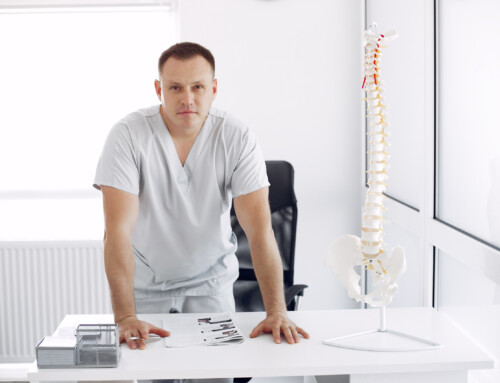Types of Chronic Pain Syndromes
Chronic pain can last for weeks, months, or even years. A costly problem for the nation, the individual costs associated with chronic pain can be overwhelming. While pain can be caused by various health conditions, it can actually cause other health-related problems (i.e. depression, high blood pressure, etc…). The most common forms of chronic pain are as follows:
Back Pain
Roughly 16 million people in the U.S. suffer from a form of chronic back pain. This pain makes it difficult to work or perform normal activities associated with daily life like walking up and down stairs, driving, or standing in place. Lower back pain can be particularly painful and debilitating. In fact, it’s a leading cause of employees taking sick time and affects adults of all ages and income levels.
Chronic pain symptoms associated with back pain can involve shooting pains that radiate beyond the back to the legs. Some people may experience persistent muscle aches in their back. Some people may experience weakness or numbness in their legs. Disc problems, nerve pain, and other back-related problems can cause back pain to persist longer than three months.
Chronic Pain Treatment for Back Pain
Patients who experience chronic back pain should visit spine specialists who specialize in back pain treatment. There are many different approaches to pain treatment that include physical therapy, lifestyle modifications, injections, pharmacological management, surgical interventions, and even alternative treatments that alleviate pain symptoms. Wake Spine & Pain Specialists specialize in back pain treatments, providing compassionate care complemented by their experience and medical expertise. Their specialists can provide effective management of chronic pain symptoms, helping people get the relief they need.
Arthritis Pain
Roughly 15 million people experience severe joint pain caused by arthritis. The CDC estimates that one in four adults experiences arthritis pain. When that pain becomes severe, sufferers can find it difficult to function and perform their usual activities. The symptoms of arthritis pain include joint stiffness during mornings, swelling of the joints, numbness or tingling in the area of joints, decreased range of motion, and redness around the joints.
How Is Chronic Arthritis Pain Treated?
Typically, clinicians treat chronic pain associated with arthritis with medications, especially anti-inflammatory medications, therapeutic injections (i.e. cortisol injections), and physical therapy. In some cases, patients might need surgery or joint replacement. Unfortunately, there isn’t a cure for arthritis, so the goal for clinicians is to help reduce arthritis symptoms so patients can lead as normal lives as possible.
Headache Pain
Many people suffer from headache pain or even severe headache pain from migraines. Each year, about 45 million Americans complain of headache pain. Tension headaches are the most common form of headache pain. They can occur occasionally or frequently. About 17% of Americans experience migraines, severe headaches that can cause dizziness, sensitivity to light, and severe pain. Cluster headaches affect fewer people but are associated with extreme headache pain that can persist for hours or days.
Treatment for Headache Pain
Clinicians will search for the root cause of headaches, especially headaches that occur frequently and with severity. Treatment will depend on the diagnosis that the patient receives. Generally speaking, however, headaches may be treated with over-the-counter pain relievers like ibuprofen or acetaminophen. Tension headaches can be alleviated with rest, acupuncture, or massage therapy.
Migraines and cluster headaches don’t always respond to treatments as well as more commonplace tension headaches. Clinicians tend to advise patients with severe headache pain to rest, use hot or cold compresses, or take prescription medications that can alleviate the pain and, in some cases, may even prevent headache onset.
Nerve Pain
One in 10 Americans suffers from some type of chronic nerve pain. The most common causes of nerve pain are when the nerves are injured or damaged, compressed, or their protective coating (myelin sheath) has been compromised. Doctors refer to nerve pain as neuropathic pain. The most common causes of chronic neuropathic pain include diabetic neuropathy (often includes pain in the extremities), sciatica (involves shooting pain down the leg), carpal tunnel syndrome (nerve pain that stems from repetitive motions), and postherpetic neuralgia (occurs after an outbreak of shingles).
Treatment of Chronic Nerve Pain
Once a patient’s clinician is able to diagnose the cause of the nerve pain, they can take steps to effectively treat it. In these cases, they will strive to treat the cause of the neuropathic pain. For instance, if the pain is caused by a tumor, they will try to shrink or remove the tumor. To alleviate pain symptoms, they will generally prescribe medications. Other interventions may include surgery or physical therapy.
Pain that persists isn’t something to ignore. Moreover, visiting a qualified medical provider can result in significant pain relief. Wake Spine & Pain Specialists is devoted to reducing patients’ pain with both conventional and innovative treatments that are always tailored to each patients’ specific condition and needs. Effective management of chronic pain allows patients an improved quality of life. If you are suffering from pain, Wake Spine & Pain Specialists can help you reclaim your life, helping you experience an improved level of comfort and mobility. Call to learn more or to schedule a consultation.







